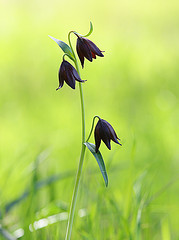
With so many exciting subjects, sometimes it’s easy to forget that this is also one of the most fragile times of year for the natural world. So, it’s important to “leave no trace” when you’re out on the trail.
Leaving no trace means you leave the wilderness just as you found it (or maybe a little better by picking up any trash you find). It means the only thing you take away is photographs, and the only thing you leave behind is footprints. But, you should also be careful just where you leave those footprints.
To ensure you leave no trace, here are a few guidelines to follow when you’re out on a trail:
Be careful where you step
Avoid stepping on plants (especially wildflowers), and stay on established trails as much as possible. No photo is worth the price of another living thing. If you do venture off trail, then stay on stable surfaces like gravel or rocks.
Clean your shoes and backpack before and after a hike
More and more invasive species are entering our wilderness, so to prevent them from spreading even more, make sure you clean your shoes and backpack before and after a hike. Seeds can get stuck in the smallest crevices, so look carefully.
Read the signs posted at the trailhead
At some of the more popular trailheads, there’s usually a big sign that has posted regulations, safety reminders, and sometimes special considerations for leaving no trace. Make sure you read and follow any rules specific to that trail.
Don’t feed wild animals
When you feed wild animals, it not only ruins the wildness of the land, but it also makes the animal start depending on human food, and then when a human doesn’t give it food, it’s more likely to get violent and hurt someone. Feeding wild animals is never a good idea, even if it does help you “get the shot.”
Pack out all trash
Whatever you bring in, you should also bring out. This includes things like toilet paper and anything else that’s “bio-degradable.”
Only clear dead vegetation, and learn how to recognize “dead” stuff
When you’re composing a photograph, you’re bound to find distracting objects in your scene and then be tempted to remove them. But, only remove the stuff that you’re certain is dead. And, learn to recognize what’s dead because in harsh environments like the desert a lot of healthy living plants look dead.
Be careful as you move around your subject and set up your tripod
When you’re exploring a composition for your subject, it’s easy to focus entirely on the subject and forget about your surroundings. So, remember to always watch where you’re walking. This is important for leaving no trace and for your safety (you don’t want to walk into a cactus, it hurts!).
Be respectful of wildlife (especially endangered species)
Every calorie for a wild animal is precious. They spend their entire day looking for food and a mate, so when you scare them away, they burn some of those precious calories. Avoid chasing wildlife, and instead let them come to you.
Learn the local ecology before visiting someplace new
Perhaps the best way to ensure you leave no trace is to learn the local ecology of an area before you venture there. This will help you understand what’s endangered, what’s invasive, and how careful you need to be while you’re hiking through that area.
Some of these guidelines might seem like a little too much, and following them might mean you only come back with one good photo per day, but with such little wilderness left on the planet and more of it being destroyed each day, it’s important for us to protect that wildness of the land that’s left.
Leaving a wilderness area just as you found it will also ensure that the next visitor enjoys that same wildness you did.
Happy trails 🙂
Get more great tips in our free weekly newsletter.
 About the Author: Steve Berardi is a naturalist, photographer, software engineer, and founder of PhotoNaturalist. You can usually find him hiking in the beautiful mountains and deserts of southern California.
About the Author: Steve Berardi is a naturalist, photographer, software engineer, and founder of PhotoNaturalist. You can usually find him hiking in the beautiful mountains and deserts of southern California.

Leave a Reply